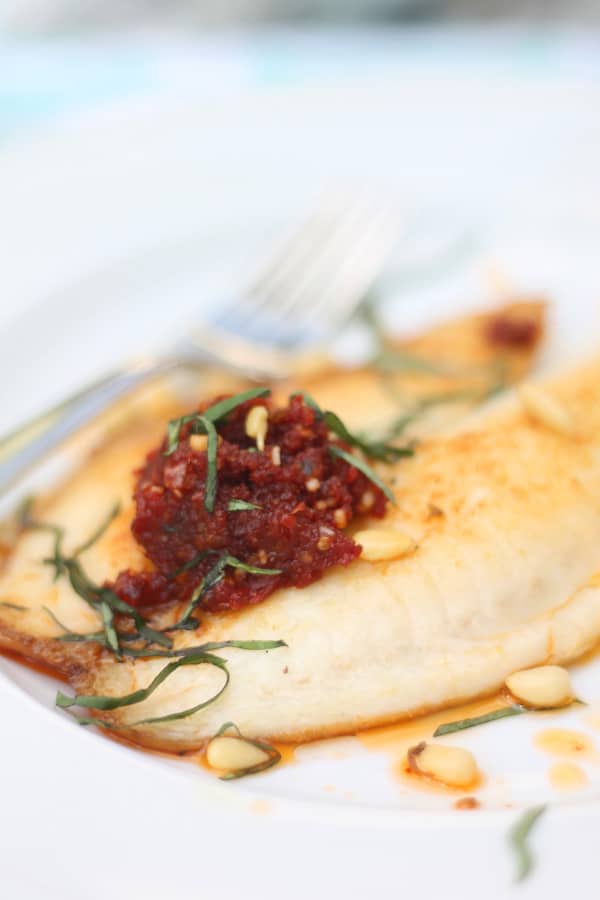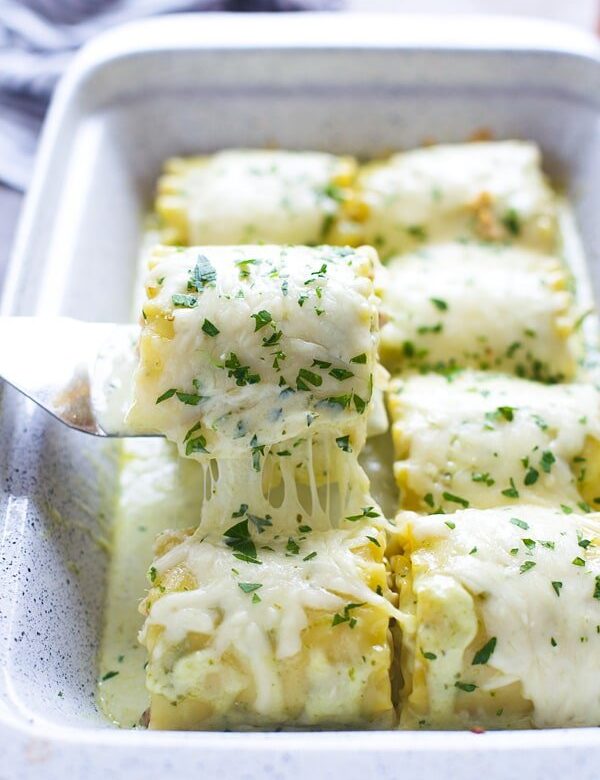This post may contain affiliate links. Please read my disclosure policy.
Morning all!! Hope everyone is having a wonderful Memorial Day weekend! Normally I probably wouldn’t post on a holiday, but I’m here to talk about something bigger that just the food you see here today.
Sustainability.
I thought that I really knew what it meant, but when Jessie over at Life As A Strawberry contacted me about participating in The Sustainable Seafood Blog Project to spread the word and get even more people talking, I learned a whole lot more. Previously, I assumed that eating “sustainably” just meant that we shouldn’t consume any type of fish or seafood that is endangered or close to extinction – and that’s a lot of it, but not quite everything.
At its simplest definition it means to fish or farm seafood in a way that promotes the vitality of the fish, but also doesn’t disturb the oceanic ecosystem or other sea creatures in the process. Take a look at this graphic Jessie put together that really paints a picture of what we’re dealing with.
I’ll be the first to admit that sustainability previously wasn’t something that was at the forefront of my mind when choosing my seafood and it’s obvious it’s not at the top of other minds as well. I witnessed this first hand the other day, when I went to a local meat and seafood market known for their knowledge and quality of product. I was sure I’d find a well-informed person that could recommend something sustainable for me to take home since most labels are so ambiguous. When I saw a bevy of halibut behind the counter, I was hopeful that it was of the U.S. Pacific wild-caught variety. Imagine my surprise when I asked the fishmonger if this was indeed a sustainable variety and he looked at me like I was speaking a foreign language and had never heard the term sustainably in reference to seafood. After some back and forth we finally found out that it was Atlantic caught, which usually means it was caught in a bottom trawl – a destructive fishing method where a large net is drug across the floor of the ocean, catching anything and everything in its path. This is a huge problem and is one of the worst methods in catching seafood since it snatches up endangered species, rare coral and other parts of the ocean floor needed for the ecosystem to survive. Needless to say, I decided to pass on the halibut and went with a farm-raised tilapia instead.
I know that I’m going to make a commitment to try my best to only purchase and consume seafood that’s sustainable, it’s just a small thing I can do to help the seafood environment that I love so much. Hopefully you will too, and if you’re under the impression it’s difficult, inconvenient, or expensive to live this way it’s honestly not. Take today’s fish for example – tilapia. It’s one of the most popular and available white fish species around and is inexpensive to boot. Some of my other favorite sustainable seafood varieties are sockeye salmon, arctic char, Dungeness crab, and snow crab – all items that are readily available across the country – even here in Kansas. Hopefully your fish monger will have a depth of knowledge on the subject, but if you’re ever in doubt on what is and isn’t a good option, check out these resources:
Monterey Bay Seafood Watch App for iPhone
Monterey Bay Seafood Watch App for Android
Monterey Bay Seafood Watch Online Buyer’s Guide

Look for other sustainable recipe posts this week from these other awesome bloggers that are participating:
Life As A Strawberry
Domestic Fits
Fork Knife Swoon
Girl Versus Dough
Karista’s Kitchen
A Zesty Bite
Hope you have a wonderful rest of your Memorial Day weekend!
- 4 tilapia filets
- ½ cup roughly chopped, sun-dried tomatoes packed in olive oil
- 1 garlic clove, roughly chopped
- 3 teaspoons pine nuts, plus more for garnish
- 1 tablespoon roughly chopped basil, plus more for garnish
- 3 teaspoons olive oil from sun-dried tomatoes
- Salt to season
- In the bottom a small food processor, combine tomatoes, garlic, nuts, pinch of salt and basil until a paste forms. With the mixer on, slowly drizzle in olive oil. Season to taste with salt.
- Season tilapia liberally with salt and pepper. In the bottom of a large sauté, heat a tablespoon or so of olive oil over a medium-high flame. Add tilapia, cook until golden brown on both sides and cooked through, about three to four minutes per side.
- Top cooked tilapia with a little bit of pesto and garnish with fresh basil, pine nuts and a little extra olive oil from the packed tomatoes.







Jessie {Life As A Strawberry} says
This looks SO GOOD! Beautiful photos, too 🙂 I’m so happy to have you as a Project Partner!
Nicole says
Thanks Jessie! Happy to be a partner!
Stephanie @ Girl Versus Dough says
Mmm, I love tilapia! And the addition of sun-dried tomato pesto sounds amazing. Lovely recipe!
Nicole says
Thanks Stephanie! Thanks to the sustainable seafood project I’m now following your beautiful blog!
Laura | Fork Knife Swoon says
This sounds delicious! Sun-dried tomato pesto is one of my favorite pasta sauces, but I’ve never tried it with fish… definitely adding this to my to-try list! Also, so glad to discover your site through this project!
Nicole says
Thank you so much Laura! Love love love Fork Knife Swoon — I’m so honored to be a part of this project with so many wonderful food bloggers. 🙂
Ryan Kokemor says
Great and easy recipe Nicole! I especially love that you can easily prep the pesto during nap time 🙂 Dinner was super quick last night. Thanks!
Website says
It’s going to be ending of mine day, except before finish I am reading this wonderful post to increase my knowledge.